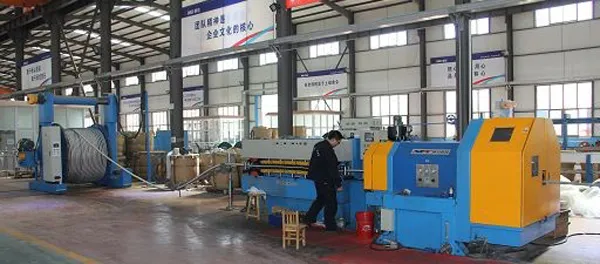10 月 . 14, 2024 00:30 Back to list
Air Escape Valve for Efficient Pressure Regulation and Release Systems
Understanding Air Release Valves Key Components in Fluid Systems
Air release valves, also known as air relief valves or air-vacuum valves, play a crucial role in fluid systems, particularly in pipelines and tanks. These valves are designed to manage air within a liquid system, preventing issues such as corrosion, water hammer, and inefficient fluid flow. Understanding their operation, applications, and significance is essential for anyone involved in engineering, maintenance, or fluid management.
What is an Air Release Valve?
An air release valve is a mechanical device installed at high points in a pipeline or on tanks to permit the escape of trapped air while preventing debris, water, or contaminants from entering the system. These valves are essential for maintaining the efficiency and safety of fluid transport systems, especially when dealing with liquids like water, fuel, or chemicals. When air accumulates in a pipeline, it can form pockets that disrupt the normal flow, leading to reduced efficiency, increased pressure, and potential damage to the system.
How Does It Work?
The operation of an air release valve is relatively straightforward. As liquid flows through the pipeline, the valve automatically detects the presence of trapped air. When air pressure builds up, the valve opens, allowing the air to escape. Once the air is released and liquid takes its place, the valve closes to maintain the system's integrity. Many air release valves have a float mechanism that ensures they only open during specific conditions, such as when air pressure exceeds a predefined threshold.
Most air release valves feature a combination of an air inlet and a liquid discharge mechanism. They are typically equipped with a float that rises and falls with the liquid level, helping to automate the valve’s operation. Some models also incorporate a small outlet designed specifically for releasing minor amounts of air, ensuring the maintenance of optimal pressure levels within the fluid system.
Applications of Air Release Valves
Air release valves find applications in various fields, including
1. Water Distribution Systems In municipal water systems, air release valves help maintain pressure and prevent air pockets that could disrupt service. 2. Sewage and Wastewater Systems These valves are crucial in sewage systems to ensure that air does not accumulate and cause backups or pressure fluctuations.
3. Irrigation Systems In agricultural settings, air release valves help maintain the efficiency of irrigation systems by preventing air locks in irrigation pipes.
air release valve

4. Industrial Processes In chemical and oil industries, these valves help manage the flow of viscous materials, ensuring consistent output and system safety.
5. Hydraulic Systems In hydraulic machinery and equipment, air release valves prevent cavitation, which can erode components and reduce efficiency.
Importance of Air Release Valves
The importance of air release valves cannot be overstated. Without these valves, fluid systems would be susceptible to numerous issues
- Corrosion Air trapped in systems can lead to oxidation and corrosion of pipes, significantly reducing their lifespan and leading to costly repairs.
- Water Hammer Sudden pressure changes caused by air pockets can result in water hammer, leading to severe structural damage within pipes and fittings.
- Inefficient Operation Air pockets reduce the effective cross-sectional area for fluid flow, leading to decreased system performance and increased energy costs.
- Safety In high-pressure systems, the inability to release trapped air can lead to dangerous overpressure conditions, potentially resulting in catastrophic failures.
Conclusion
Air release valves are vital components in maintaining the integrity and efficiency of fluid systems across various applications. By effectively managing trapped air, these valves prevent issues that could lead to costly repairs, operational downtime, and safety hazards. Understanding how they function and where to implement them ensures that fluid systems operate smoothly and efficiently. Whether in municipal water supply networks or industrial pipelines, the importance of air release valves cannot be overlooked in the realm of fluid management.
Share
-
Understanding the Differences Between Wafer Type Butterfly Valve and Lugged Butterfly ValveNewsOct.25,2024
-
The Efficiency of Wafer Type Butterfly Valve and Lugged Butterfly ValveNewsOct.25,2024
-
The Ultimate Guide to Industrial Swing Check Valve: Performance, Installation, and MaintenanceNewsOct.25,2024
-
Superior Performance with Industrial Swing Check Valve: The Essential Valve for Any SystemNewsOct.25,2024
-
Industrial Swing Check Valve: The Ideal Solution for Flow ControlNewsOct.25,2024
-
You Need to Know About Industrial Swing Check Valve: Functionality, Scope, and PerformanceNewsOct.25,2024